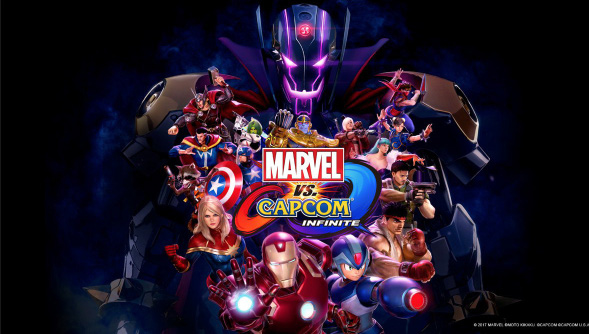
Credit:@marvelvscapcom
By Travis Farmer
The fourth entry in Capcom’s incredibly popular fighting game series, “Marvel Vs. Capcom,” released on Sep. 19, 2017, to rabid fans long awaiting the game’s release, but also to much criticism.
“Marvel vs. Capcom” is a fusion, with characters from Marvel Comic Books along with classic characters from video games produced by Capcom. With superhero characters such as Captain America, Spiderman, and Thor from the Marvel side; and characters like Mega Man, Chris Redfield, and Nemesis from the “Resident Evil” series, Ryu from “Street Fighter,” and Dante from “Devil May Cry” representing Capcom.
The story of “Marvel vs. Capcom: Infinite” is straightforward, as is the course for most fighting game story modes. The story is incredibly short, clocking in at only about two to three hours. The story revolves around Sigma, the primary antagonist of the “Mega Man X” series, fusing with Ultron, an “Avengers” villain. By fusing themselves into a single villain named “Ultron-Sigma,” they also fuse the two universes together.
Like its predecessors, “Marvel Vs. Capcom” is a two-dimension fighting game, most similar in style to general audiences of “Street Fighter” or “Mortal Kombat.” However, to differ from most “standard” fighting games, “Marvel vs. Capcom,” is a tag team game. The players control two characters each, with their choice of an infinity stone. Infinity stones are taken from the Marvel side of the story, with every stone having a different power to be used against your opponent. For example, the “power” stone may knock your opponent away from you, interrupting their combo.
The gameplay of “Marvel vs. Capcom” as a series has always been excellent, with “Marvel vs. Capcom 3” being considered one of the greatest fighting games of all time, with its main stages being devoted to the game’s competitions at most, if not all major fighting game conventions. “Marvel vs. Capcom: Infinite” unfortunately does not quite live up to the hype next to its predecessor. While “Infinite” does have fantastic gameplay and fighting mechanics, along with the infinity stones system addition, it, unfortunately, cannot live up to the craziness of the three-on-three tag team battle craziness in “Marvel vs. Capcom 3.”
One gameplay mechanic the new game does add is the “active switch” character swapping mechanic as opposed to the rigid character swapping of the game’s predecessor. This mechanic allows the player to swap between their two fighters whenever they see fit, even in midair or mid-combo. The player can create their own assist move or defensive maneuver using another character’s abilities.
The game has encountered much criticism before and even after its release. It still receives more criticism than what is typical for a triple-A high budget mainstream fighting game. Much of the criticism around the game revolves around its art style, described as odd and even ugly, as most of the Marvel characters look very muscular, to the point of deformity.
Another shining criticism is that of the very limited and almost uninspired character roster, compared to the other games in the series. All of the Marvel characters are ones that appear in the Marvel Cinematic Universe movies, leading many to believe that Marvel only agreed to add characters to the game that could be advertised. For example, there are no X-Men in the game leading to controversy on if they were not included because Fox Studios currently holds “X-Men” film rights and rather than Marvel. Instead, new characters replaced and replicated old character fighting styles. For example, Black Panther in “Infinite” has a very similar fighting style and move set to Wolverine from “Marvel vs. Capcom 3.” There are also complaints pointed towards the Capcom side, with Chris Redfield as the main example. Cited specifically as a problem was the overuse of Redfield in this series, especially when Leon Kennedy, another Resident Evil character, is deemed more interesting.
Many of these problems are exacerbated by the announcement of “Dragon Ball Fighters Z,” a new fighting game currently being published in Japan. “Dragon Ball Fighters Z,” also a two-dimensional tag team fighting game, hits the high notes in all the areas that “Marvel vs. Capcom: Infinite” appeared to be lacking. It has a visually appealing sharp art style, incredible looking game mechanics, and a nostalgia factor that just makes Marvel look like it was lazy in game making by comparison in the eyes of the fans.
“Marvel vs. Capcom: Infinite” may be a poor follow-up to “Marvel 3;” however, it still comes out as an incredibly strong online competitive fighting game. With any luck, with post-release patches and characters will hopefully resolve the biggest problems with the game in time for it to be shown off at major fighting game tournaments.




